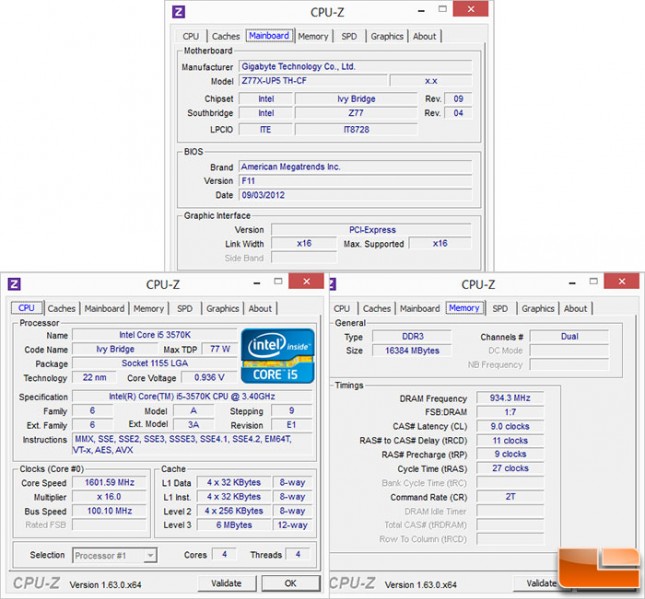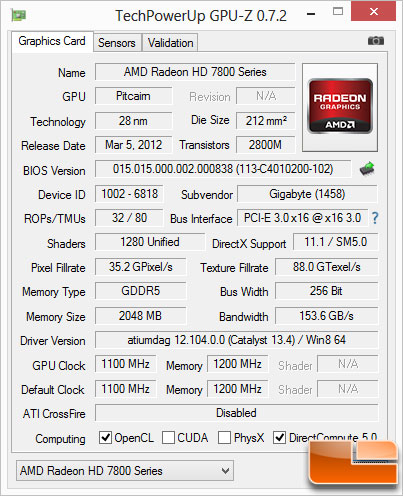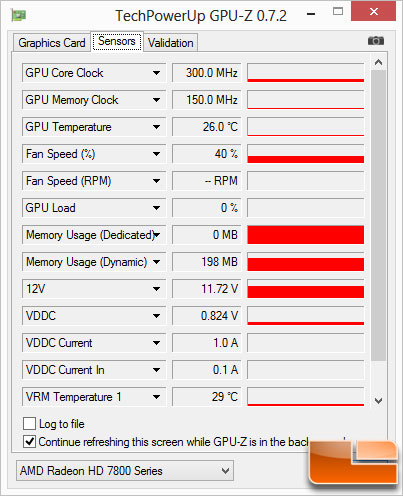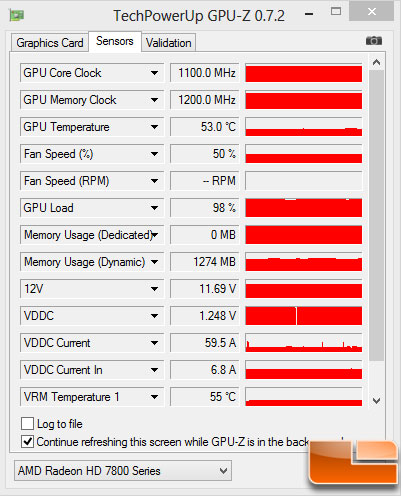Gigabyte Radeon HD 7870 2GB GHz Edition Video Card Review
Test System
Before taking a look at the benchmarks, let’s take a look at the test system that was used. All testing was done with a fresh install of Windows 8 Pro x64, no additional software was running during the tests.
Video Cards & Drivers used for testing:
- ASUS 560Ti (ENGTX560 Ti DCII/2DI/1GD5) – GeForce 320.49 Drivers
- Gigabyte HD7870 (GV-R787OC-2GD) – Catalyst 12.104.0.0 Drivers
Intel Z77/LGA1155 Platform

The Intel Z77 system used to test the video cards was using the Gigabyte Z77X-UP5 TH motherboard, with the F11 BIOS from 09/03/2012. Installed for memory was 16GB Kingston Hyper-X Blue 1866MHz, running at the rated speed with 9-11-9-27 2T timings. An Intel 520 series 180GB SSD was used for the OS and benchmarks. Testing was completed in a room with an ambient temperature of 67F.
| The Intel Z77 Test System | ||
|
Component |
Brand/Model |
Live Pricing |
|---|---|---|
| Processor | Intel Core i5-3570K | Click Here |
| Motherboard | Gigabyte Z77X-UP5-TH | |
| Memory | 16GB Kingston Blue 1866MHz | Click Here |
| SSD | Intel 520series 180GB | Click Here |
| Cooling | Zalman CNPS9900 MAX | Click Here |
| Power Supply | Lepa G650-MAS | Click Here |
| Operating System | Windows 8 Pro 64-Bit | Click Here |
Gigabyte HD7870 GPU-Z Information:


GPU-Z is reporting that while the HD7870 is idle, the card is put into a power saving mode which downclocks the card. While the card is clocked at 1,100MHz. in power saving mode it is at 300MHz, which in turn lowers the temperature down to 26C. Not to mention the power used for the card is greatly lowered.

Once the card is pushed to being fully loaded, things are different. Here everything is as it should be, the core clocked goes from 300MHz to 1,100MHz. Memory clock jumps from 150MHz to 1,200MHz. Temperature and power usage jumps as well.
